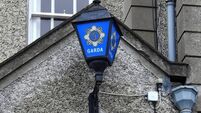Elaine Loughlin: Sinn Féin stole the headlines, but the Alliance party made the greatest strides

Alliance Party leader Naomi Long with one of the party's new MLAs Patricia O'Lynn, the first woman elected in the North Antrim constituency, the late Ian Paisley's old stamping ground. Picture: Jonathan McCambridge/PA
While Sinn Féin has deservedly grabbed the headlines, the Northern Ireland elections has also revealed a growing chunk of the population who no longer look for green or orange on the ballot paper.
The seismic shift in Northern politics — which has led to Sinn Féin becoming the largest party and set to take over the position of First Minister — cannot be underplayed.













